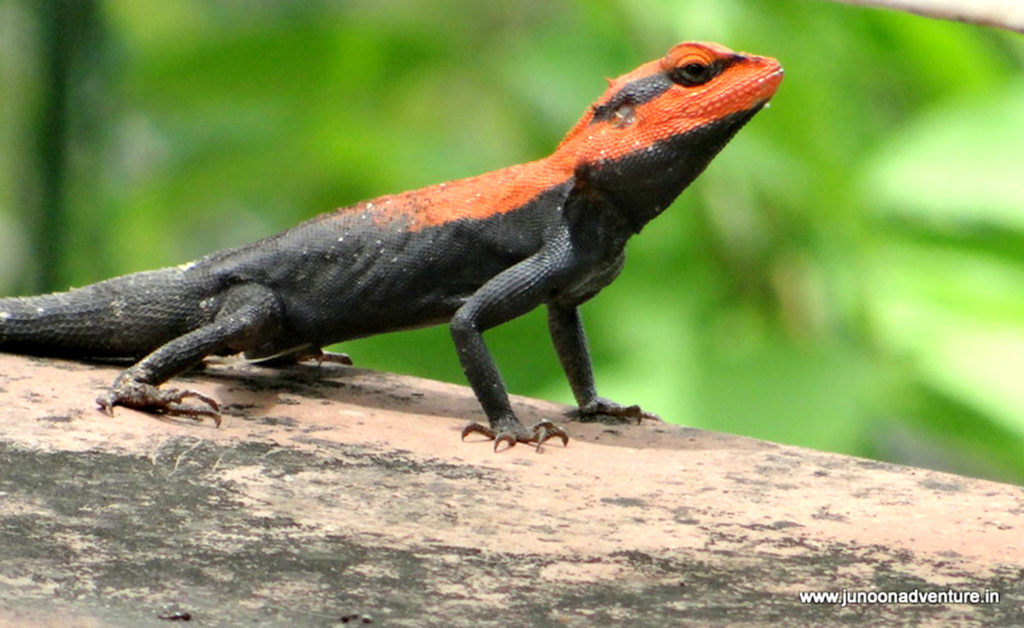Spotting this amazing reptile on one of our treks in South India was genuinely thrilling. The Peninsular Rock Agama is said to be pretty common in the region. When we saw it, the lizard was exhibiting features and actions that are distinctive to its breeding season – notice the bright red colour of this male. He is usually reddish brown in colour but it changes into this bright and attention-grabbing red shade to attract females. The Lizard lives on bare rocks where its colour (non-breeding season) helps it in camouflaging with the surface. Guess we wouldn’t even have spotted it if it weren’t trying to flirt with its Girlfriend! It was also doing one of its head-push-up dances at the time to be more distinctive. Apologies that we couldn’t shoot a video of the moment.
Spotted near Catherine Waterfall, Kotagiri, Tamil Nadu one a trek in the Nilgiris.
SPECIES:
Psammophilus Dorsalis, a type of Agama which belongs to a family of over 300 species of Iguanian Lizards.
FOUND IN:
South India in the Western Ghats, Nilgiris, around Arcot, Bangalore and Nallamalai Hills.
FEATURES:
Female Peninsular Rock Agamas are olive-brown with dark brown specks on the body with white, elongated spots along their backs. Males are usually has a pale brownish colour on the top of the head and back. It also has a dark brown or black lateral stripe extending from behind the eye going all the way to cover the lower sides. However, during breeding season, the male Peninsular Rock Agama takes up some really bright colours with its head turning sunny-yellow or vermilion red while its underside, limbs, tail and eye stripe turns a contrasting black.
EXTRA FACTS:
- Likes to bask in the sun openly
- Eats insects
- Lies on bare rock surfaces for extended periods
- Flattens its body on the ground to camouflage with the rock and hide if it sees predator birds overhead
- One of its sister species – Psammophilus blanfordanus, is found in the Eastern Ghats.



